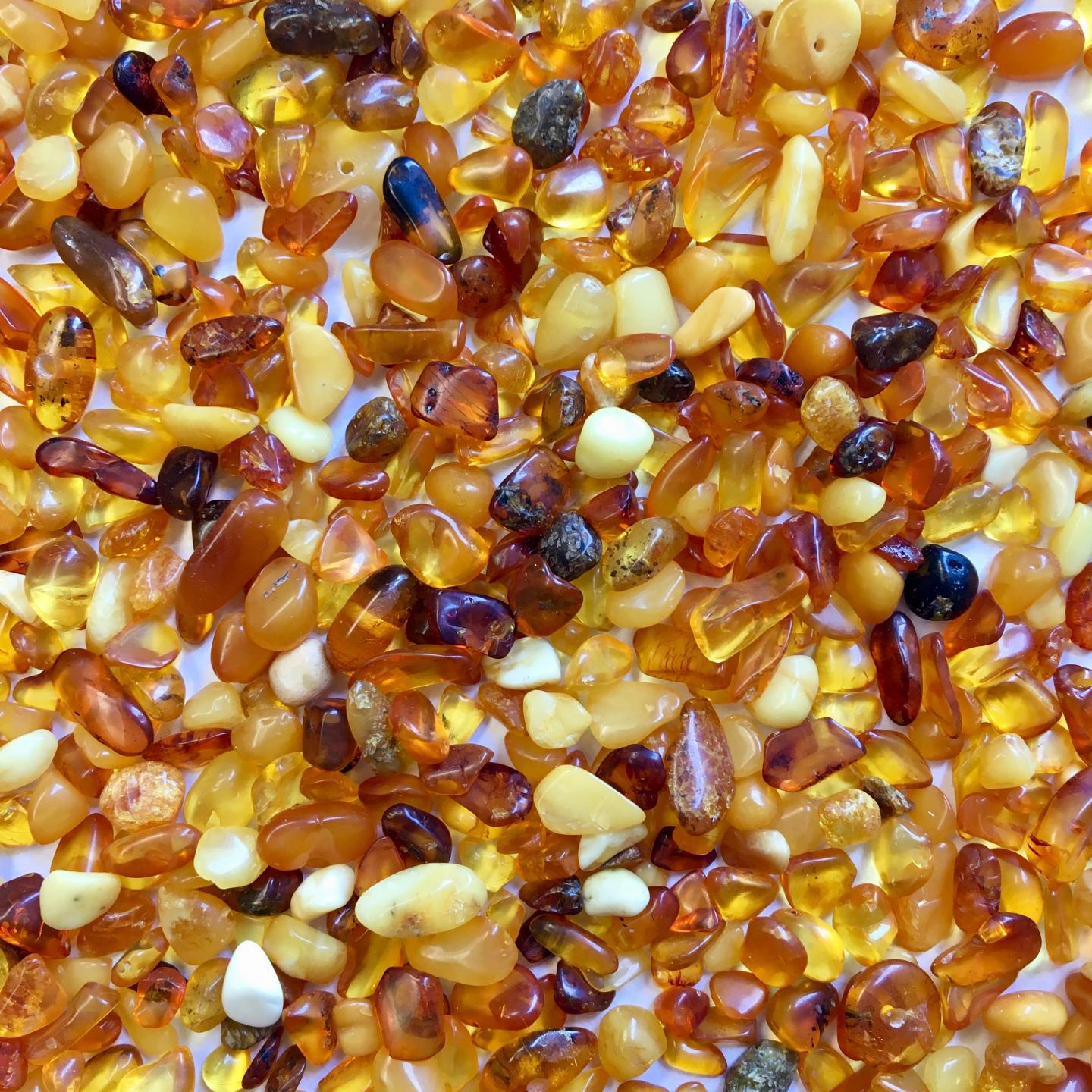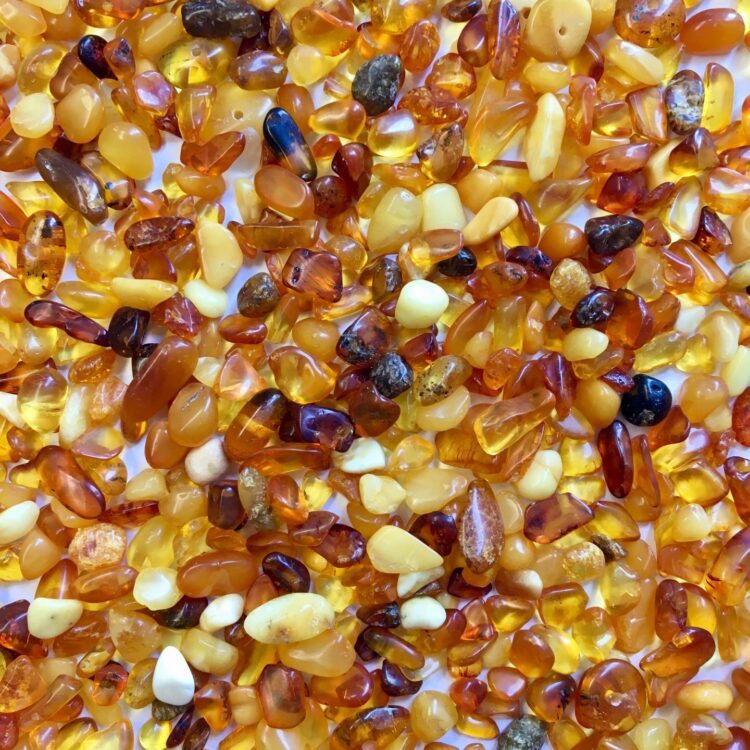
Credit: Connor McDermott
WASHINGTON, April 5, 2021 — For centuries, people in Baltic nations have used ancient amber for medicinal purposes. Even today, infants are given amber necklaces that they chew to relieve teething pain, and people put pulverized amber in elixirs and ointments for its purported anti-inflammatory and anti-infective properties. Now, scientists have pinpointed compounds that help explain Baltic amber’s therapeutic effects and that could lead to new medicines to combat antibiotic-resistant infections.
The researchers will present their results today at the spring meeting of the American Chemical Society (ACS). ACS Spring 2021 is being held online April 5-30. Live sessions will be hosted April 5-16, and on-demand and networking content will continue through April 30. The meeting features nearly 9,000 presentations on a wide range of science topics.
Each year in the U.S., at least 2.8 million people get antibiotic-resistant infections, leading to 35,000 deaths, according to the U.S. Centers for Disease Control and Prevention. “We knew from previous research that there were substances in Baltic amber that might lead to new antibiotics, but they had not been systematically explored,” says Elizabeth Ambrose, Ph.D., who is the principal investigator of the project. “We have now extracted and identified several compounds in Baltic amber that show activity against gram-positive, antibiotic-resistant bacteria.”
Ambrose’s interest originally stemmed from her Baltic heritage. While visiting family in Lithuania, she collected amber samples and heard stories about their medicinal uses. The Baltic Sea region contains the world’s largest deposit of the material, which is fossilized resin formed about 44 million years ago. The resin oozed from now-extinct pines in the Sciadopityaceae family and acted as a defense against microorganisms such as bacteria and fungi, as well as herbivorous insects that would become trapped in the resin.
Ambrose and graduate student Connor McDermott, who are at the University of Minnesota, analyzed commercially available Baltic amber samples, in addition to some that Ambrose had collected. “One major challenge was preparing a homogeneous fine powder from the amber pebbles that could be extracted with solvents,” McDermott explains. He used a tabletop jar rolling mill, in which the jar is filled with ceramic beads and amber pebbles and rotated on its side. Through trial and error, he determined the correct ratio of beads to pebbles to yield a semi-fine powder. Then, using various combinations of solvents and techniques, he filtered, concentrated and analyzed the amber powder extracts by gas chromatography-mass spectrometry (GC-MS).
Dozens of compounds were identified from the GC-MS spectra. The most interesting were abietic acid, dehydroabietic acid and palustric acid — 20-carbon, three-ringed organic compounds with known biological activity. Because these compounds are difficult to purify, the researchers bought pure samples and sent them to a company that tested their activity against nine bacterial species, some of which are known to be antibiotic resistant.
“The most important finding is that these compounds are active against gram-positive bacteria, such as certain Staphylococcus aureus strains, but not gram-negative bacteria,” McDermott says. Gram-positive bacteria have a less complex cell wall than gram-negative bacteria. “This implies that the composition of the bacterial membrane is important for the activity of the compounds,” he says. McDermott also obtained a Japanese umbrella pine, the closest living species to the trees that produced the resin that became Baltic amber. He extracted resin from the needles and stem and identified sclarene, a molecule present in the extracts that could theoretically undergo chemical transformations to produce the bioactive compounds the researchers found in Baltic amber samples.
“We are excited to move forward with these results,” Ambrose says. “Abietic acids and their derivatives are potentially an untapped source of new medicines, especially for treating infections caused by gram-positive bacteria, which are increasingly becoming resistant to known antibiotics.”
###
A press conference on this topic will be held Monday, April 5, at 11 a.m. Eastern time online at http://www.
The researchers acknowledge support and funding from the University of Minnesota Engebretson Drug Design and Development Grant and the Office of the Vice President for Research Grant-in-Aid of Research, Artistry, and Scholarship Program.
The American Chemical Society (ACS) is a nonprofit organization chartered by the U.S. Congress. ACS’ mission is to advance the broader chemistry enterprise and its practitioners for the benefit of Earth and all its people. The Society is a global leader in promoting excellence in science education and providing access to chemistry-related information and research through its multiple research solutions, peer-reviewed journals, scientific conferences, eBooks and weekly news periodical Chemical & Engineering News. ACS journals are among the most cited, most trusted and most read within the scientific literature; however, ACS itself does not conduct chemical research. As a specialist in scientific information solutions (including SciFinder® and STN®), its CAS division powers global research, discovery and innovation. ACS’ main offices are in Washington, D.C., and Columbus, Ohio.
To automatically receive news releases from the American Chemical Society, contact [email protected].
Note to journalists: Please report that this research was presented at a meeting of the American Chemical Society.
Follow us: Twitter | Facebook
Title
Paleopharmaceuticals: Prospective drugs from Baltic amber
Abstract
Amber is formed through the fossilization of tree resin from various species of pine and pine-like trees over millions of years. The largest known deposits of amber, which originate from now extinct conifers of the family Sciadopityaceae, are located in the Baltic Sea region. Amber from this region, referred to as Baltic amber, has been used medicinally for centuries due to its immune-boosting, wound-healing, analgesic, anti-inflammatory, anti-infective, antifungal, and anticancer properties. Despite its well-established use in folk medicine, a comprehensive study of the bioactive constituents of Baltic amber has yet to be conducted to explain its therapeutic effects. Furthermore, fossils are an under investigated yet promising source of novel drug scaffolds due to the transformations that occur during the fossilization process and the different metabolic products generated by extinct species. Here we report optimized conditions for extraction and identification of compounds present in Baltic amber. We also present a comparison of the compounds extracted from samples of Baltic amber and Sciadopitys verticillata, the closest living relative to the extinct conifers that produced the resin that became Baltic amber. Finally, we report in vitro antibacterial activity data for parent structures of the identified compounds of interest.
Media Contact
ACS Newsroom
[email protected]





